Website feedback is your secret weapon to uncover what visitors truly think, beyond what analytics can reveal.
Your site might load quickly, rank well and tick all the UX and SEO boxes. But even a perfectly optimised website can leave visitors confused or frustrated and you won’t know why unless you ask.
That’s where website feedback comes in. It bridges the gap between data and understanding, giving you the why behind the what. But here’s the real question: how do you actually ask for website feedback in a way that delivers meaningful, actionable results?
Where should you place your feedback forms?
What should they look like?
And most importantly, what should you ask?
In this blog, we’ll explore exactly how to ask for website feedback, from choosing the right moments and channels, to crafting focused, user-friendly questions that get results:
- Why does asking for website feedback matter?
- How do I set clear goals for my website feedback?
- When is the best time to ask for website feedback?
- How do I design feedback forms that users actually complete?
- How do I show users that their feedback matters?
- Why should website feedback be an ongoing conversation?
- Final Thoughts: Ready to start listening to your visitors?
Why does asking for website feedback matter?
Feedback gives you what analytics cannot provide: context, clarity and a human perspective. While your data might tell you what is happening on your site, only your users can tell you why, making feedback a crucial strategic tool. Without that insight, you’re guessing in the dark!
For example, according to a study conducted by Number Analytics, companies acting on customer feedback enjoy 25–30 % higher retention rates than those that don’t.
Asking for feedback helps you do three important things:
- Identify friction
- Uncover unmet expectations
- Build trust
When you give visitors the chance to speak up, you’re not just collecting opinions, you’re forging a relationship that can transform your product.
Imagine this: your checkout page is busy, but conversions are low. Analytics show lots of activity, but no clear reason why shoppers aren’t completing purchases.
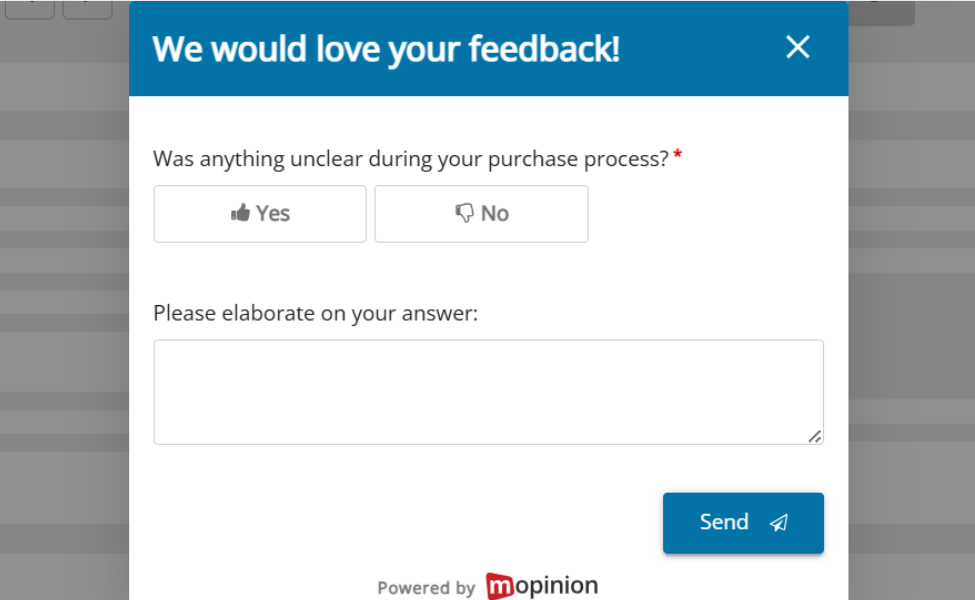
Ask a simple question like, “Was anything unclear during your purchase process?” and you might uncover a hidden delivery fee causing hesitation. That single insight could mean the difference between lost sales and delighted customers.
This is the kind of transformation raw data alone cannot achieve. It requires human insight, and that starts with asking the right questions!
The answers you get could be the difference between lost sales and delighted customers.
How do I set clear goals for my website feedback?
Before deciding how or where to ask for feedback, first define exactly what you want to learn. Broad, vague prompts like “Got feedback?” will yield equally vague answers. To gain valuable insights, your questions need to be specific and tied to a clear part of the user journey.
Are you in need of some inspiration on what to ask in your feedback form? Check out our blog on website feedback questions, a guide on what to ask and where.
For example:
- If you notice high drop-off rates on your checkout page, ask: “Was anything unclear during your purchase process?”
- If visitors are frequently landing on a support article but still submitting tickets, a simple prompt like:“Did this page answer your question?”, might reveal what’s missing.
- Let’s say you’re managing an online retail site. You add a prompt to product pages asking: “What’s missing from this page?”. If multiple visitors respond, “Clearer pricing information,” that feedback highlights a critical gap. By making prices more transparent, you reduce confusion, build trust, and make it easier for customers to choose and commit.
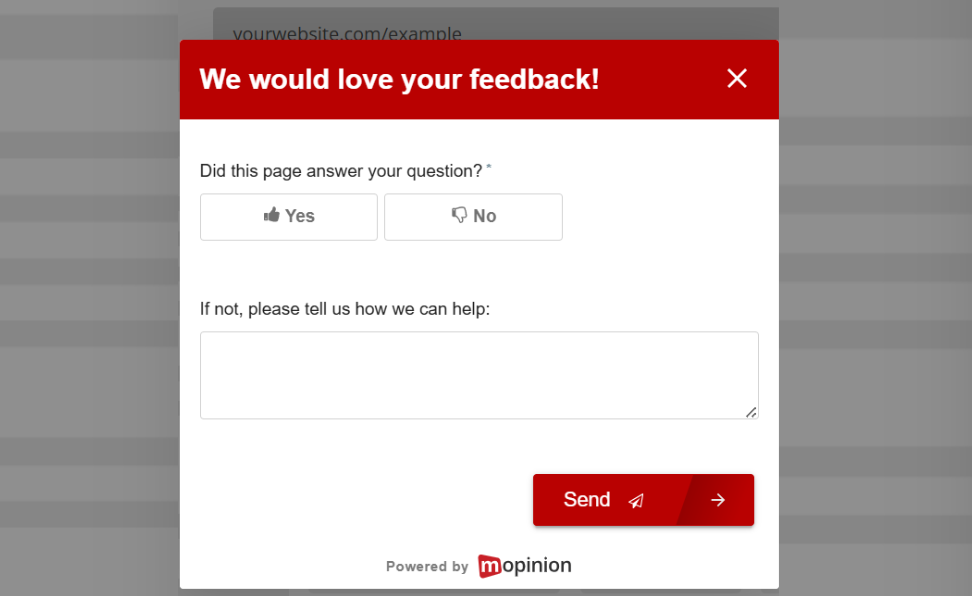
Precise questions lead to precise answers, and those are the ones you can actually act on. Make every question count and every answer valuable.
When is the best time to ask for website feedback?
The best time to ask is when the experience is fresh in the visitor’s mind. For example, right after someone completes an action, such as submitting a form or finalising a purchase, you could ask:
“Was anything difficult or confusing about this process?”
Another strategic moment is when a user is about to leave the site without converting. An exit-intent prompt like:
“What stopped you from completing your task today?”
It can reveal pain points that aren’t visible in your analytics.
can reveal pain points that aren’t visible in your analytics. Want to learn more about exit-intent forms? Read about them in our blog on creating a customer feedback form.
These are the moments your site reveals its hidden barriers!
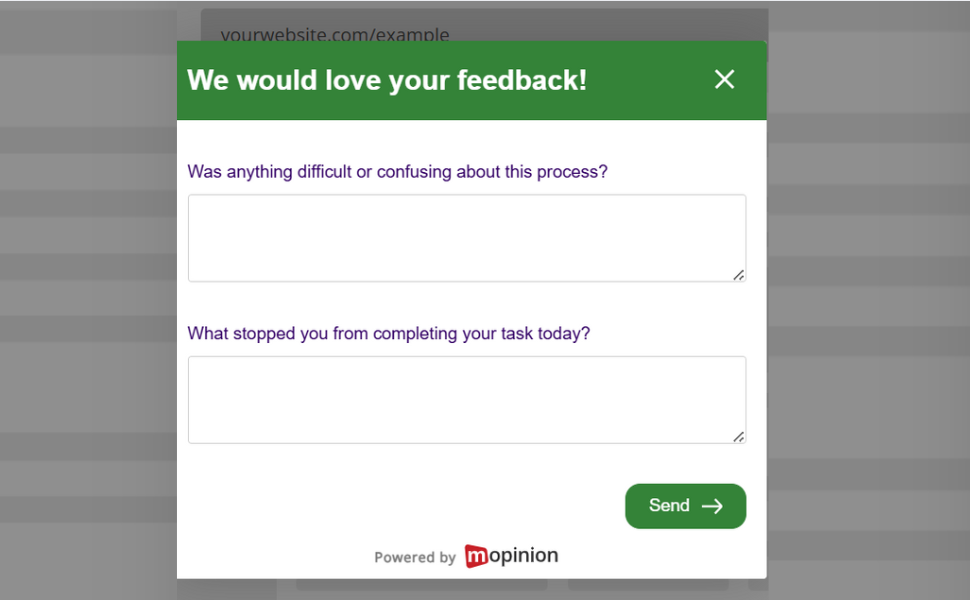
Timing also matters on pages with unusually high bounce rates or low engagement. A short feedback prompt triggered after a few seconds of inactivity may uncover problems such as confusing layouts, unclear copy or missing information.
For example, if you place a feedback prompt on your pricing page after 30 seconds of no interaction, and users repeatedly mention that it’s unclear which plan is best for them, that feedback tells you exactly where to improve.
The right moment leads to the right insights!
Asking at the right moment ensures feedback is more accurate, relevant, and likely to lead to improvements that truly matter.
When you ask for feedback is just as important as what you ask. Timing is everything!
How do I design feedback forms that users actually complete?
The goal of a feedback form is to make it easy for users to help you improve, not to burden them with a survey.
Simplicity is your secret weapon!
Keep questions short, one to three maximum, ideally mixing quick-click options with optional open text. And importantly, the tone should feel conversational, not corporate.
Compare the following two examples:
Effective:
“How easy was it to complete your task today?”
– Very easy, Somewhat easy, Not easy
– Optional comment box
Ineffective:
“Rate your experience with this page.”
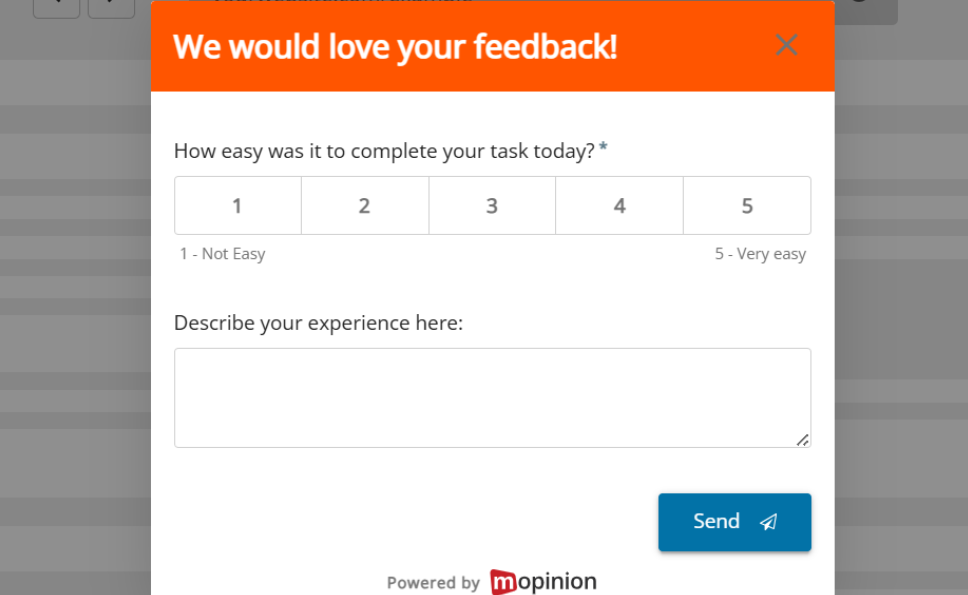
The first respects the user’s time while giving you measurable and explainable insights. While the intent behind the second question isn’t bad, it could do with some friendlier language.
Currently, it sounds like it belongs in a research paper.
When you write like a human, people are more inclined to respond honestly and more likely to engage again in future. Make it effortless to engage and watch your response rates soar!
For more inspiration on crafting effective questions, check out our comprehensive guide to survey questions.
How do I show users that their feedback matters?
One of the most overlooked parts of collecting website feedback is what happens afterwards.
This is where many opportunities slip away.
If a user takes the time to share their thoughts, don’t leave them wondering if it mattered. Let them know they’ve been heard.
This doesn’t mean following up with everyone directly. A simple message like:
“Thanks for your input, we’re using it to improve this experience.”
can go a long way.
When feedback leads to a visible change, consider highlighting it:
“Thanks to your feedback, we’ve simplified our signup form.”
This kind of transparency shows that you’re not just asking for feedback as a formality; you genuinely want to improve. It builds credibility, fosters trust, and increases the chances of repeat engagement.
Nothing builds loyalty like showing you care!
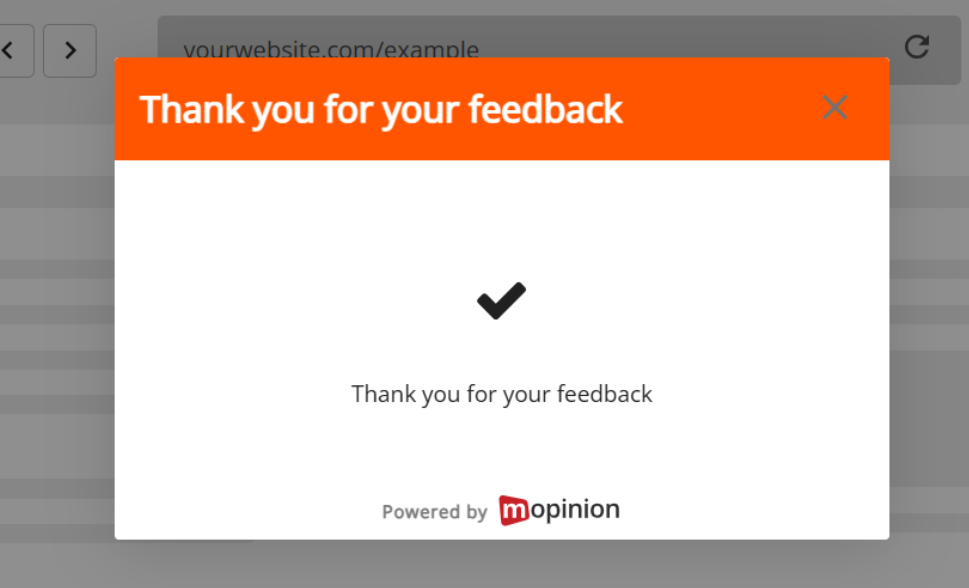
Why should website feedback be an ongoing conversation?
Asking for website feedback shouldn’t be a one-off project. It’s a continuous process that evolves with your users, your goals and your product.
Over time, trends will emerge. You’ll spot patterns, repeated complaints, or ideas you hadn’t considered. You’ll identify high-impact improvements and start seeing feedback as part of how you keep improving your site.
Crucially, your visitors will start to see your website as a space that listens.
That’s not just smart UX, it’s smart business.
The brands that thrive are the ones who treat feedback like a conversation, not a checklist.
Final Thoughts: Ready to start listening to your visitors?
Your website isn’t just a digital billboard. It’s a dialogue.
Stop guessing what your users want. Stop assuming they’re happy.
Ask. Listen. Act.
Because when you truly listen, your website becomes more than a destination, it becomes an experience visitors trust and want to return to.
And that makes all the difference!
Ready to take your website feedback to the next level? With Mopinion’s powerful yet user-friendly platform, you can easily collect, analyse, and act on real-time customer insights, all in one place.
Start turning visitor feedback into meaningful improvements today!
Ready to see Mopinion in action?
Want to learn more about Mopinion’s all-in-1 user feedback platform? Don’t be shy and take our software for a spin! Do you prefer it a bit more personal? Just book a demo. One of our feedback pro’s will guide you through the software and answer any questions you may have.







